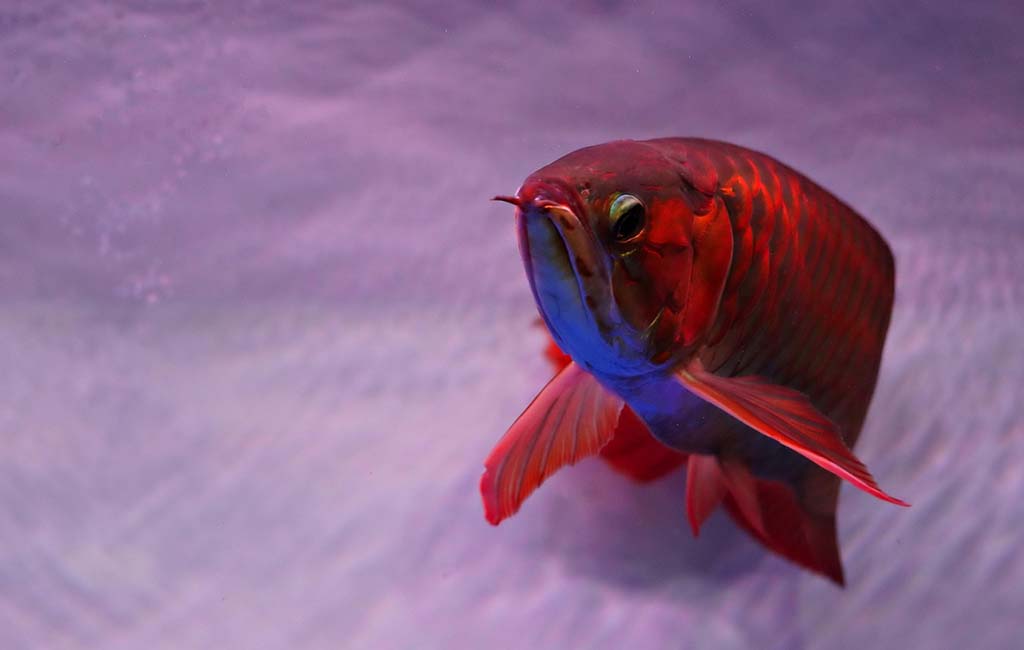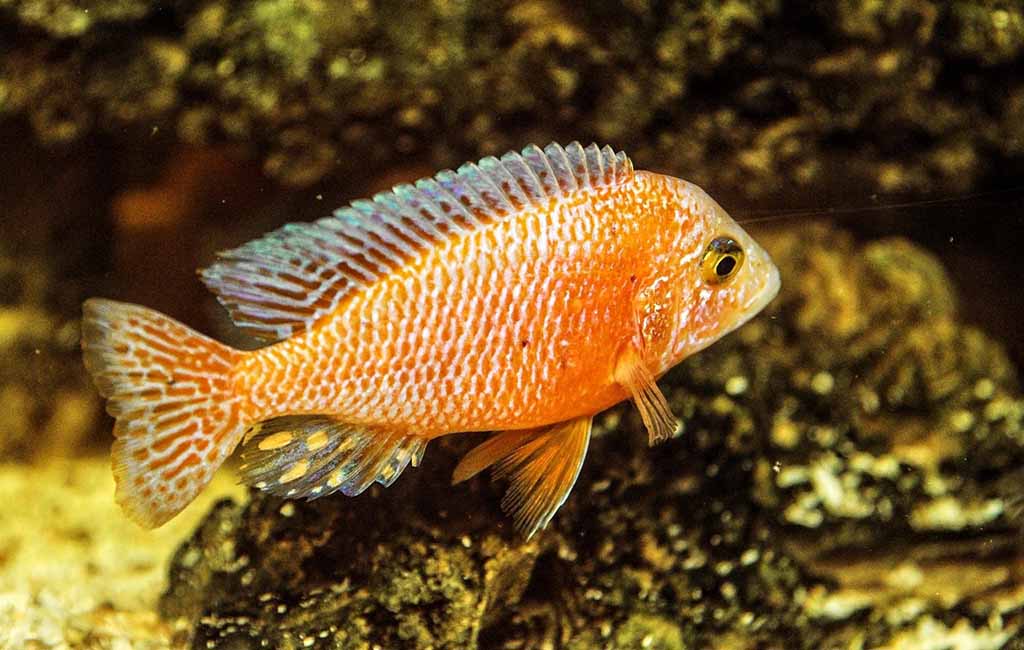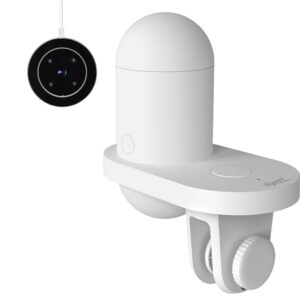Mouthbrooders fish are species that ensure intense care for their eggs by keeping them in their mouths. Mouth brooder role varies among species, i.e., maternal, paternal, or both. This article will give you insight into the protective behavior and unique traits of mouth brooder fish. Potential threats are also a part of the discussion. At the end, you’ll learn about different species of mouth-brooding cichlids.
Content Table
What Is a Mouth Brooder?
Mouth brooder fish are a group of fish species that carry their eggs in their mouth for incubation. They do it to ensure the protection and avoid egg cannibalism from potential predators. They have three categories.
| Maternal mouthbrooders | Paternal mouthbrooders | Mutual mouthbrooders |
Mouthbrooding Species
There are almost 53 different mouth-brooding species. All of these species are from the following families.
| Cichlids | Cardinalfish | Betta Fish |
| Catfish | Arowanas | Tilapia |
Special Traits
They exhibit such traits that discriminate them from the rest of the fish species. Here are some unique and common mouth brooder traits.
Egg Incubation
It’s a characteristic that they incubate eggs in their mouth. It helps them to avoid potential environmental and other threats, i.e., predators. Mouth incubation helps them to have an optimal oxygen supply in a controlled atmosphere.
Buccal Pouch
It’s another unique and special mouth brooder fish trait. All mouthbrooders have a flexible buccal pouch. It expands during incubation to create enough space for eggs.
High Birth Rate
Mouthbrooders have a high birth rate because they highly take care of their eggs. Even some males fertilize eggs in their mouths for successful fertilization.
Extended care
Extend care is another unique feature of mouthbrooders. After being hatched, they carry to take care of their young fish and feed them.
Characteristics
Mouth brooder fish exhibit some unique characteristics that make them distinct from the rest. Here are a few of them.
| These fish have small scales on their elongated bodies | They have a large mouth and teeth | They have three keels on each side of their tail |
| A few have false eggs on the anal fin | A few have large pelvic fins | They lay small eggs |

Mouth brooding cichlids
The Protective Mouthbrooding Fish
Mouthbrooding fish do intense care and protection for their young ones. Here are some special protective traits of these fish.
Protective Characteristics
Exceptional Parenting
They incubate eggs in their mouth to provide the young ones a perfect hatching environment. It also helps them to keep them safe from predators.
Higher Survival Rate
Mouthbrooding increases the safety as compared to openly laid eggs. It reduces the predation risk and increases the survival rate.
Eggs Mobility
As they carry eggs in their mouth and can freely move. Therefore, they can provide them with a safe environment that increases their life expectancy after hatching.
Fasting
Fasting is another protective measure of mouthbrooders. They fast until the eggs hatch, and do it to avoid accidental cannibalism of eggs.
Hiding
When they carry eggs, they hide to avoid confrontation with potential predators.
Breeding Characteristics
Mouthbrooding fish have a unique breeding style. Here are some breeding characteristics.
Carrying Eggs in the Mouth
After courtship, both partners make a nest, pit, or clean a flat surface to lay their eggs. After laying their eggs, one of the parents, i.e., the mother or father, collects them in their mouth.
Incubation
They collect their eggs in their mouths because they can maintain excellent incubation conditions. They carry them until the eggs hatch. The hatching period varies among fish species, i.e., from a few days to several weeks.

mouthbrooder fish
Fry Care
Like kangaroos, they also carry their young ones, i.e., fry, in their mouth to ensure proper protection. Sometimes, when parents feel safe, they temporarily release fry for feeding. Once they finish the feeding, the parent recollects them in their mouth.
Releasing
Once the mouth brooder becomes confident that young ones, i.e., fry, are grown enough to survive, the caregiver releases them. However, in some species, the fry can return to the parent when it feels threatened.
Caregiver Role
Who will carry the eggs varies among the species. Like in betta and catfish, usually males have eggs.
Dealing with Food and Eggs in Mouthbrooding Fish?
As mentioned, they eat small amounts or even abstain from eating. They do so to avoid harm to eggs or any other threat. African cichlids are the perfect example of such fish species.
Egg Eating
However, a few mouthbrooders have some exceptions, i.e., cichlids can eat their eggs to reduce stress. Research concludes that cichlids can eat up to 40% of the eggs.
Result of Filial Cannibalism
This phenomenon is called filial cannibalism. It reduces the successful offspring production rate. However, it helps to improve the caregiver’s health. Moreover, filial cannibalism also gives an antioxidant boost to the energy for further spawning after a few months.
Mouthbrooding Cichlids List
| Common Name | Life span (Years) | Mouthbrooding Responsibility | Diet | General Characteristics |
| Severum | Up to 10 | Both partners | They are omnivores and eat insects, plant matter, and fish pellets | Peaceful
Easy to care for Varied diet |
| Fairy Cichlid | 8-10 | Female | Fairy Cichlids are carnivores and mostly consume invertebrates | Extended family groups
cooperative breeding behavior |
| Calvus Cichlid | 10–15 | Female | They are carnivores and eat snails and small fish | Slow-growing
Requires rocky habitats |
| Moorii Cichlid | 10–15 | Female | Moorii are herbivores. So, they eat algae and other plant matter | Schooling fish
Live in groups in groups |
| Nile Tilapia | 9-10 | Female | They are omnivores. They grow well on algae, detritus, and small invertebrates | Hardy
Easy to care |
| Redhump Eartheater | 5-10 | Male | They are omnivores and eat insects and plant matter | Sand-sifting
A hump on males’ heads |
| Orange Chromide | 5-8 | Female | Orange Chromide are omnivores and eat algae, insects, and small crustaceans | Semi-aggressive |
| Burton’s Mouthbrooder | 5-8 | Both parents | They are omnivores and consume insects, crustaceans, and plant matter | Highly adaptable
Diverse coloration |
| Zebra Mbuna | 5-10 | Female | Zebra Mbuna are omnivores and algae, insects, and small crustaceans | Aggressive
Territorial Bright coloration |
| Peacock Cichlid | 5–18 | Female | They are carnivores and feed on invertebrates and small fish | Colorful
Relatively peaceful |
To Sum Up
Mouthbrooders keep the eggs in their mouth until they are ready to face the predators. This role varies among males and females. Both parents can carry them. 53 mouth-brooding fish species belong to different families. Intense care, fasting, higher birth rate, etc., are special traits of these species. Filial cannibalism and brood parasitism are a few problems for mouthbrooders.


Leave a comment